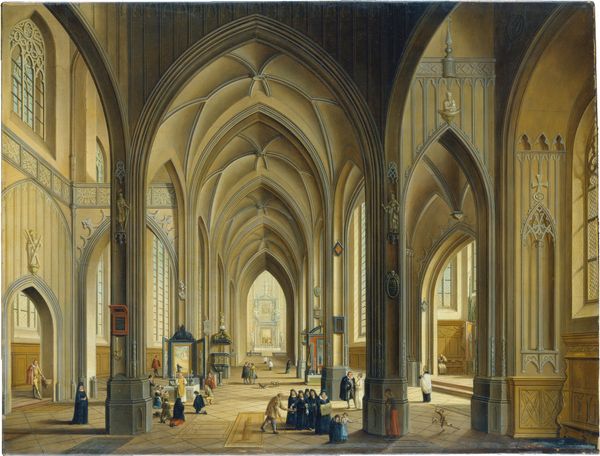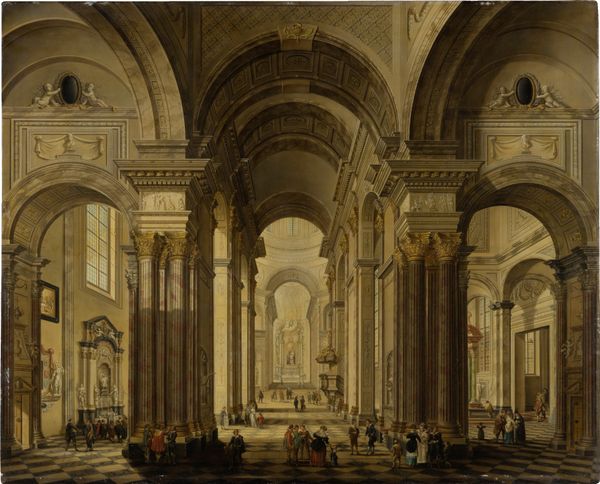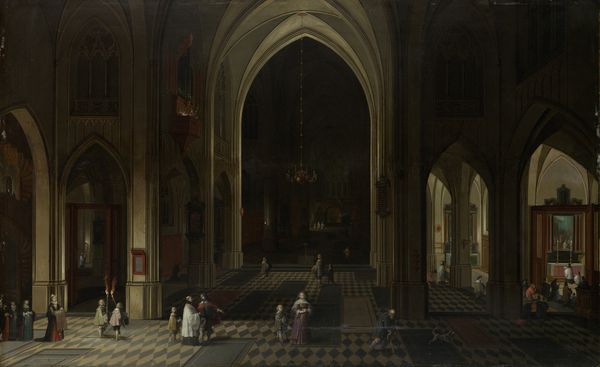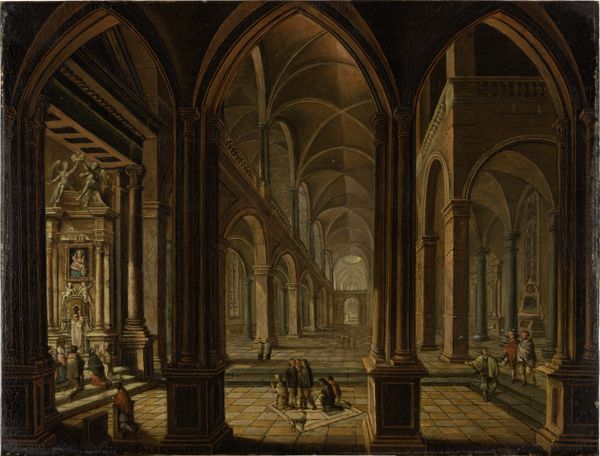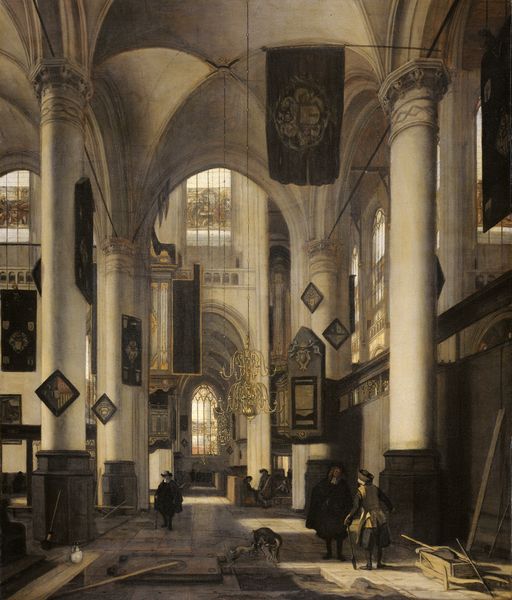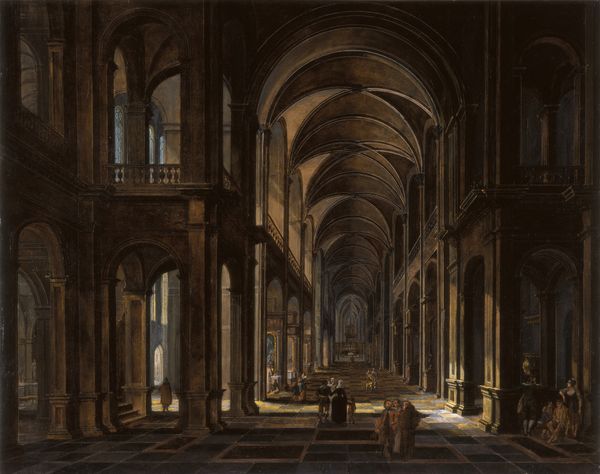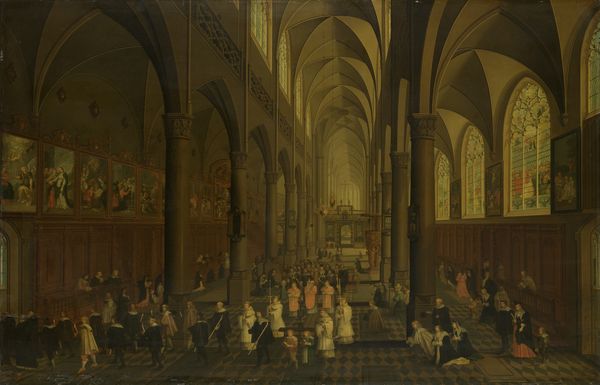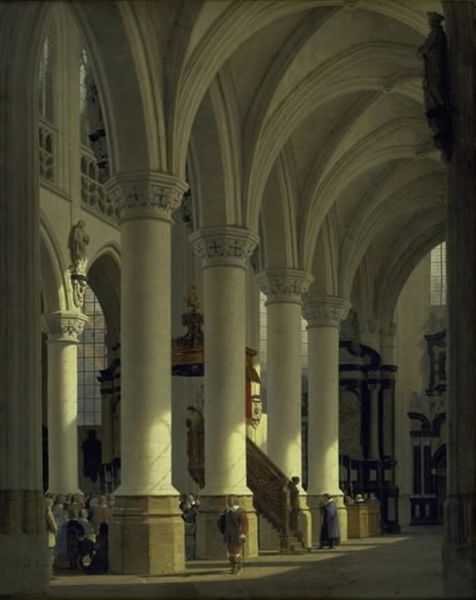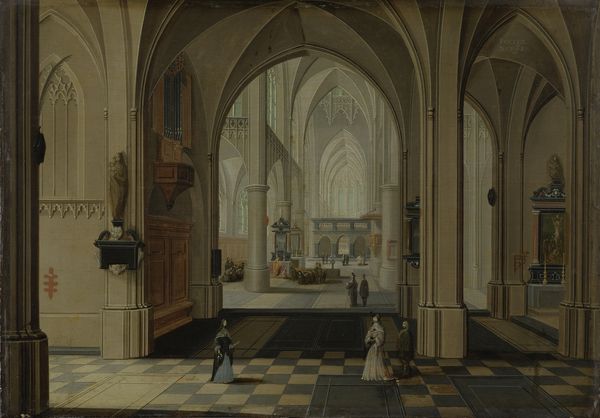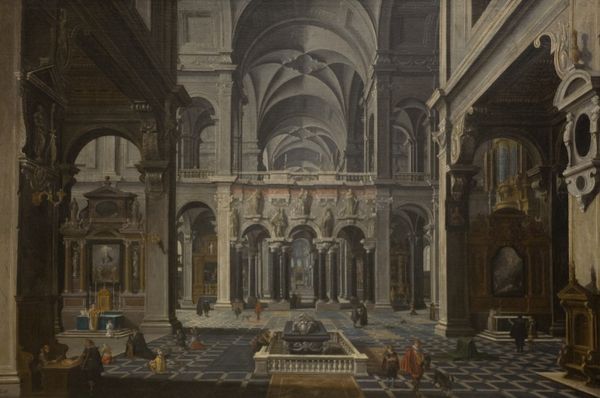
painting, oil-paint
#
medieval
#
baroque
#
painting
#
oil-paint
#
landscape
#
perspective
#
figuration
#
historic architecture
#
traditional architecture
#
genre-painting
#
academic-art
Dimensions: height 47.1 cm, width 63.7 cm
Copyright: Rijks Museum: Open Domain
Curator: Dirck van Delen's "Interior of a Gothic Church," created in 1641 using oil paint, invites us into a seemingly endless architectural space. What are your initial thoughts? Editor: I'm immediately struck by the sheer scale and almost ghostly quality. It feels both immense and strangely empty, despite the figures scattered within. There's a certain austerity in the light and color. Curator: Indeed, van Delen’s use of perspective emphasizes the church’s grandeur, reflecting the power and influence of religious institutions during that period. It's interesting how he plays with the concept of the ideal versus the reality. Gothic architecture held significant symbolic weight, and paintings like this were commissioned and displayed to reinforce social and religious structures. Editor: And you can see that ambition reflected in the meticulous detail of the columns and arches, a feat of skill in its own right. I wonder about the materials he used, specifically what kind of pigments would give this kind of luminosity, as well as how that paint would have been sourced and prepared in the 17th century. Those material processes often tie into a broader context of craft traditions and class relations. Curator: That's a great point. This type of architectural painting allowed viewers to experience spaces that they might not otherwise have access to, acting almost as a form of visual tourism controlled by those in power. But van Delen was more interested in idealized architectural spaces than existing ones; here, for example, he combines elements of different real structures, thus constructing a fictional reality for the benefit of his patrons. Editor: Right. And these paintings end up becoming commodities themselves, reflecting how labor and artistry were increasingly folded into market systems. Considering the social role and conditions under which van Delen’s art was conceived, made and consumed deepens our experience of the final object on display. Curator: Absolutely. This painting serves as both a visual record and an instrument of its time, revealing the intricate relationship between art, power, and belief. Editor: For me, analyzing the physical substance, what makes up the final object—the very source and composition of the paint itself—adds an undeniably palpable layer. Hopefully listeners can see the historical processes within, and not just architectural grandeur.
Comments
rijksmuseum about 2 years ago
⋮
Bright light shines through the windows of this imaginary interior in a non-existent church. Dirck van Delen included details actually found in churches, such as the large organ at the left, the pulpit, and the choir screen with the Tablets of the Law. Van Delen lived and worked in Arnemuiden in the province of Zeeland and had the figural groups in this picture painted by the Delft artist Anthonie Palamedesz.
Join the conversation
Join millions of artists and users on Artera today and experience the ultimate creative platform.

